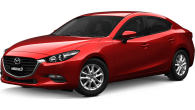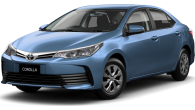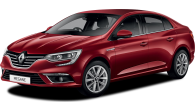Peugeot has gone from strength to strength in Europe off the back of a branding and design renaissance.
The brand now fields a competitive range of SUVs as well as a new generation of tech and design-focused cars.
In Australia, you'd be forgiven for not knowing any of this, with French cars still well and truly in the niche basket. And with Aussie consumers increasingly shunning cars like the 508 in favour of SUVs, the liftback and wagon combo has the odds stacked against it.
So, if you're not already a French car die hard (they very much still exist) – should you be stepping out of your comfort zone and into Peugeot's latest and greatest offering? Read on to find out.
Peugeot 508 2020: GT
| Engine Type | Turbo 4, 1.6L |
|---|---|
| Fuel Type | Premium Unleaded Petrol |
| Fuel Efficiency | 6.3L/100km (combined) |
| Seating | 5 |
| Price From | $27,940 - $33,660 |
| Safety Rating |
|
Is there anything interesting about its design?
9 / 10
Let's lead with this Pug's strongest suit. No matter whether you choose the liftback or the wagon, you're getting a seriously stunning car. There are a lot of elements comprising the front and rear fascias, yet somehow it's not overly busy.
The downward swoop of the bonnet and the angular rear, with a subtle flicked up wing on the liftback, give this car a curvy but muscular aesthetic, and there are more than enough 'wow' items, like the DRLs which streak down from the front light clusters and rear fittings, which reference this car's classy 407 ancestor.
Meanwhile, the more you look at the wagon, particularly from the rear, the more elements begin to stand out. Either car has a sleek silhouette when spotted from the side.
There's no doubt it has a rich visual presence – one which is befitting of Peugeot's new push to be seen as a more premium offering in Australia. It's also easy to draw comparisons to recent design leaders like Volvo's S60 and V60 twins, and Mazda's new 3 and 6.
Inside is just as bold, with Peugeot's iCockpit interior theme providing a fresh take on a tired formula.
The theme consists of a steering wheel that 'floats' low and flat in the dash, with the instrument cluster perched atop. There's also a raised console and super-wide 10-inch touchscreen adorning the centre of an otherwise minimalist looking interior.
Annoyingly, the dual-zone climate control is operated via the touchscreen, which is clumsy and annoying to look at when you should be keeping your eyes on the road. Give us an old-fashioned set of dials next time, it's just so much easier.
The design is comprised of mostly tasteful leather finish, gloss black panelwork and soft-touch plastics. The pictures somehow don't do it justice, although personally I think it could do with a little less chrome.
Maybe we should really be thanking SUVs for a resurgence in great-looking passenger cars for every niche.
Does it represent good value for the price? What features does it come with?
7 / 10
Peugeot has made the topic of price an easy one. The 508 arrives in Australia in just one trim level, the GT, which wears an MSRP of either $53,990 for the Sportback or $55,990 for the Sportwagon.
An impressive specification is completely standard, including a 10-inch multimedia toucschreen with Apple CarPlay and Android Auto connectivity, built-in navigation and DAB+ digital radio, a 12.3-inch digital dash cluster, modestly sized 18-inch alloy wheels, full LED front and rear lighting, adaptive dampers, which respond to the car's five driving modes, and a thorough active-safety suite, which includes adaptive cruise control.
.jpg)
The black fully leather interior trim is included, as well as heated and powered front seats.
The only two items that reside on the options list are a sunroof ($2500) and premium paints (either metallic at $590 or pearlescent at $1050).
.jpg)
Non-Peugeot die hards will be cross-shopping the 508 against the also-single-variant Volkswagen Arteon (206 TSI - $67,490), Skoda Octavia (RS 245 - $48,490) or perhaps the Mazda6 (Atenza - $49,990).
While all of those options, including the 508, are not budget buys, Peugeot makes no apologies for the fact that it's not going after the volume end of the market. It hopes the 508 will become the brand's "aspirational flagship."
.jpg)
.png)
How practical is the space inside?
8 / 10
No matter which bodystyle you pick, the 508 is a practical unit, although there are a few areas where the design takes priority.
We'll start with the luggage area, where both cars are at their best. The Sportback offers 487-litres of storage, which is up there with the biggest hatchbacks and most mid-size SUVs, whereas the wagon offers almost 50 extra litres (530L), which is more space than most people will realistically need.
Up in the second-row space is decent, with an inch or two of airspace for my knees behind my own (182cm tall) driving position. There's room above my head once I'm seated - despite the slopey roofline - but getting in and out is a scramble, with the C-pillar jutting down where the door joins the body.
.jpg)
You'll fit three adults across, with a bit of a squeeze, and there are ISOFIX child-seat mounting points on the outer two seats.
The rear seats also get access to a set of air vents, two USB power outlets and netting on the back of the front seats. There are cupholders in the doors, but they're so tight they'll only really hold an espresso cup.
Up front, the door issue is the same – it won't hold a 500ml bottle due to the complex door cards – but there are two large cupholders in the centre.
Storage for the front occupants is far better than it is in this car's 308 hatch sibling, with the posh raised centre console also offering a long trench for phones and wallets, as well as a deep centre-console box and a storage area underneath, which also hosts the front USB outlets. There's a decently sized glovebox on the passenger side.
.jpg)
Room for front occupants is also good, as the seats are set low in the body, but knee room is limited due to the wide console and overly thick door cards.
The iCockpit design is perfectly suited to someone my size, but if you're particularly short you won't be able to see over the dash elements, and if you're particularly tall it will get uncomfortable quickly, with the wheel blocking elements or simply sitting too low. Seriously, just ask our resident giraffe-person, Richard Berry.
What are the key stats for the engine and transmission?
8 / 10
Peugeot has made this department easy, too. There's just one drivetrain.
It's a 1.6-litre four-cylinder turbo petrol engine, which punches above its weight on the power front with 165kW/300Nm. If you think about it, there were many V6 engines that wouldn't have produced that kind of power, even just a few years ago.
The engine drives the front wheels only via an also-new eight-speed torque converter automatic transmission. There's no all-wheel drive and no diesel as part of Peugeot's simplify-and-conquer strategy.
How much fuel does it consume?
7 / 10
The 508 is rated to consume an impressive-sounding 6.3L/100km on the combined cycle, although in my recent test of the 308 GT hatchback, which shares the same drivetrain, I scored 8.5L/100km.
While our countryside blast at the 508's launch event would be an unfair representation of this car's real-world fuel consumption, I'd be surprised if most people scored below 8.0L/100km, given this car's extra kerb weight over the 308 and the nature of its entertaining drive.
We should stop for a moment and appreciate that this engine is the first one on sale in Australia featuring a petrol particulate filter (PPF).
While other manufacturers (like Land Rover and Volkswagen) have been vocal about the fact that they cannot bring PPFs to Australia due to our lax (high-sulfur) fuel quality, Peugeot's "totally passive" system allows for higher sulfur contents, so 508 owners can rest assured they're driving around with reasonably low CO2 tailpipe emissions of 142g/km.
As a result, however, the 508 requires you to fill its 62-litre tank with a minimum 95RON mid-grade unleaded petrol.
What's it like to drive?
8 / 10
The 508 matches up to its swoopy looks by being a whole lot of fun, but also surprisingly refined behind the wheel.
The 1.6 turbo isn't wildly powerful for something this size, but it's easily grunts enough, with peak torque easily lighting up the front wheels from a standstill. It's quiet, too, and the eight speed is silky-smooth in most driving modes
Speaking of which, special attention should be given to the driving modes. In many cars you'll get a 'sport' button, which, nine times out of 10, is basically useless. But not here in the 508, where each of its five distinct driving modes alters everything from engine response, transmission map and steering weight to the mode of the adaptive dampers.
.jpg)
Comfort is best for plodding around town or in traffic, with a smooth engine and transmission response to inputs and light steering, which makes it a cinch to move around.
The prime B-roads we were on around Canberra's countryside periphery, however, demanded the full-fat sports mode, which makes the steering heavy and instantly responsive and the engine far more aggressive. It will let you ride each gear all the way up to the red line and switching to manual gives impressively snappy responses, via the flappy paddle, wheel-mounted shifters.
I was taken aback to find that no matter which mode I chose, the suspension was excellent. It was softer in comfort but even in sport it wasn't as brutal as the 308 GT hatch, soaking up the larger bumps without shaking up the occupants in the process. This is partially due to the 508's reasonably sized 18-inch alloys.
.jpg)
The wheel itself feels great in your hands, with a small radius and slightly square shape making it easy to wrangle. My main complaint is directed at the the multimedia touchscreen, which is seated so deep in the dash it requires taking your eyes a bit too far off the road to adjust anything – including the climate controls.
With no all-wheel drive and modest power, the 508 is hardly a proper sportscar, but it is still a great balance of refinement and fun where it counts.
Warranty & Safety Rating
What safety equipment is fitted? What safety rating?
8 / 10
The 508 comes loaded as standard with an impressive suite of active safety items including auto emergency braking (AEB – works from 0 – 140km/h), lane-keep assist (LKAS) with lane-departure warning (LDW), blind-spot monitoring (BSM), traffic-sign recognition (TSR), and active cruise control, which also lets you set your exact position within the lane.
Thanks to the 508's AEB also detecting pedestrians and cyclists, it already carries a maximum five-star ANCAP safety rating.
The expected suite of features include six airbags, three top-tether and two ISOFIX child-seat mounting points as well as electronic stability and brake controls.
What does it cost to own? What warranty is offered?
7 / 10
Peugeot currently offers a competitive five-year unlimited kilometre warranty promise, which includes five years of roadside assist.
The 508 only has to be serviced once every 12 months or 20,000km, which is nice, but that's where the good news ends. Service pricing is steeper than budget-brand peers, with a fixed-price program costing between $600 and $853 per visit. Over the length of the warranty it will cost you a total of $3507 or an average of $701.40 per year.
It's almost twice the price of some competitors, but Peugeot does promise that the service visits are all inclusive of expendable items like fluids and filters etc.
.jpg)
Verdict
The 508 draws you in with its stunning design, but under the surface there's a well-equipped and practical car.
While it might not be destined for mass popularity in Australia, it's still a compelling semi-premium option that should have you asking yourself: "Do I really need an SUV?"
Pricing Guides
.png)
Range and Specs
| Vehicle | Specs | Price* |
|---|---|---|
| GT | 1.6L, Premium Unleaded Petrol, 8 SPEED ELECTRONIC AUTOMATIC | $27,940 - $33,660 |



.jpg)
.jpg)
.jpg)
.jpg)
.jpg)
.jpg)
.jpg)
.jpg)
.jpg)
.jpg)
.jpg)
.jpg)
.jpg)
.jpg)
.jpg)













.jpg)

.jpg)
.jpg)

.jpg)


.jpg)

.jpg)
Comments